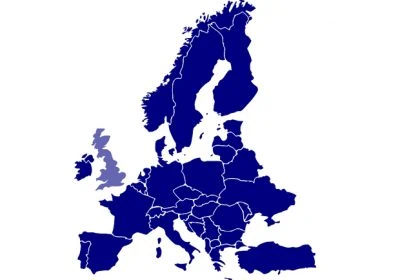The examiner of a patent application in Germany may in principle not change a description title without the applicant’s consent, the German BPatG ruled in its leading decision MOSFET device. Nor does the description title necessarily have to correspond to the term of the main claim.
 In the course of a patent application and the examination procedure for the patent application, certain passages in the patent documents are regularly amended, supplemented or even deleted in practice. This is usually done in an exchange between the patent applicant and the patent office examiner. According to § 38 German Patent Law, this is permissible – until the decision on the grant of the patent – on condition that these amendments do not extend the subject-matter of the application.
In the course of a patent application and the examination procedure for the patent application, certain passages in the patent documents are regularly amended, supplemented or even deleted in practice. This is usually done in an exchange between the patent applicant and the patent office examiner. According to § 38 German Patent Law, this is permissible – until the decision on the grant of the patent – on condition that these amendments do not extend the subject-matter of the application.
Application documents of a patent application
The application documents of a patent application include the correct and complete description, the drafting of the claims and a summary of the invention. In addition, the inventor(s) must be named and, if required by the Patent Office, models and samples must be submitted. The description title should give a brief and technically precise overview of the subject matter of the application (according German Patent ordinance).
The facts of the case
The present case MOSFET device concerned the national phase in Germany of an international application PCT/US2012/067486. After receiving the examination report of the German Patent and Trademark Office (DPMA), the applicant filed new patent claims, including claim 1. Furthermore, the description was supplemented by the words “and processes used in the production”. The description of the invention remained unchanged.
The patent was granted by the DPMA in January 2019 – but including the following amendments by the patent examiner: in patent claim 9, a semicolon and a single letter “D” were deleted. Above all, the examiner added the processes used in the production to the description title, which had been introduced into the description by the applicant.
The applicant filed an appeal against the issued decision. He claimed that the decision to grant differed in substance from her desired patent application. The granted claims, in particular claim 1, defined a “super-junction metal-oxide semiconductor field effect transistor (MOSFET) device”. However, in the decision to grant the patent, the title was given as “Edge closure for super-junction MOSFET devices and method of manufacture thereof”.
The applicant requested that the patent be granted with the newly filed patent claims and also with a new description title, which would then be adapted to the subject-matter of the patent claims.
BPatG revokes decision – but without substantive decision
In its judgment, the Federal Patent Court actually overturned the disputed decision to grant – but without a substantive decision on the merits of the case under § 79 (3) No. 2 Patent Law. For the court found an inadmissible act by the examiner. The examiner of a patent application may in principle not amend the title of the description without the applicant’s consent, the BPatG ruled and formulated this as a leading decision.
Description title in a patent application
The title of the invention must always be indicated at the beginning of the description as the title of the description according to § 10 German Patent Ordinance and should accordingly correspond to the generic term of the main claim (i.e. the designation of the device in patent claim 1). This, however, was not mandatory, decided the BPatG.
The decisive factor in the present case was that the examiner had made a substantive amendment to the grant documents by adding the procedure to the description title – and this is not permissible without the applicant’s consent. The court stated that editorial adjustments in the grant documents were admissible, such as the deletion of a semicolon. However, the change of the descriptive title constituted a violation of the principle of filing the application, explained the BPatG.
Therefore, the contested decision had to be set aside without a decision on the merits, the BPatG ruled and referred the case back to the Patent Office.
Patent application: time-consuming and complex
Once again we can see here: The application process for a patent is a time-consuming and complex procedure, all the more so if a PCT patent application is transferred to the national phases. The correct and previously required search is extensive, the formulation of the patent claims is complex. These define the scope of protection of your patent. It is important to claim the best possible scope of protection: as much as possible and at the same time as limited as necessary in order not to be contestable for a patent infringement.
European patent application
With regard to a European patent application, it should be noted that some patent offices themselves issue a title if they consider it appropriate (for example the EPO, see Official Journal 1991, page 224), but must always do so in accordance with the disclosed description and claims. The applicant will then be informed of this in the communication under Article 67(3) EPC. Any change to the title of the patent application (the description title) must therefore not introduce anything into the patent application which is not disclosed therein.
Do you have any questions and would you like assistance with a patent application?
Our attorneys have many years of expertise in patent law as well as in the entire field of intellectual property and are entitled to represent you before any court – in Germany and internationally. Of course, our firm also offers professional patent searches and is happy to assist you with patent applications.
Please contact us if you are interested.
Sources:
Judgement of BPatG MOSFET device, 7 W (pat) 1/19
Image:








Leave a Reply